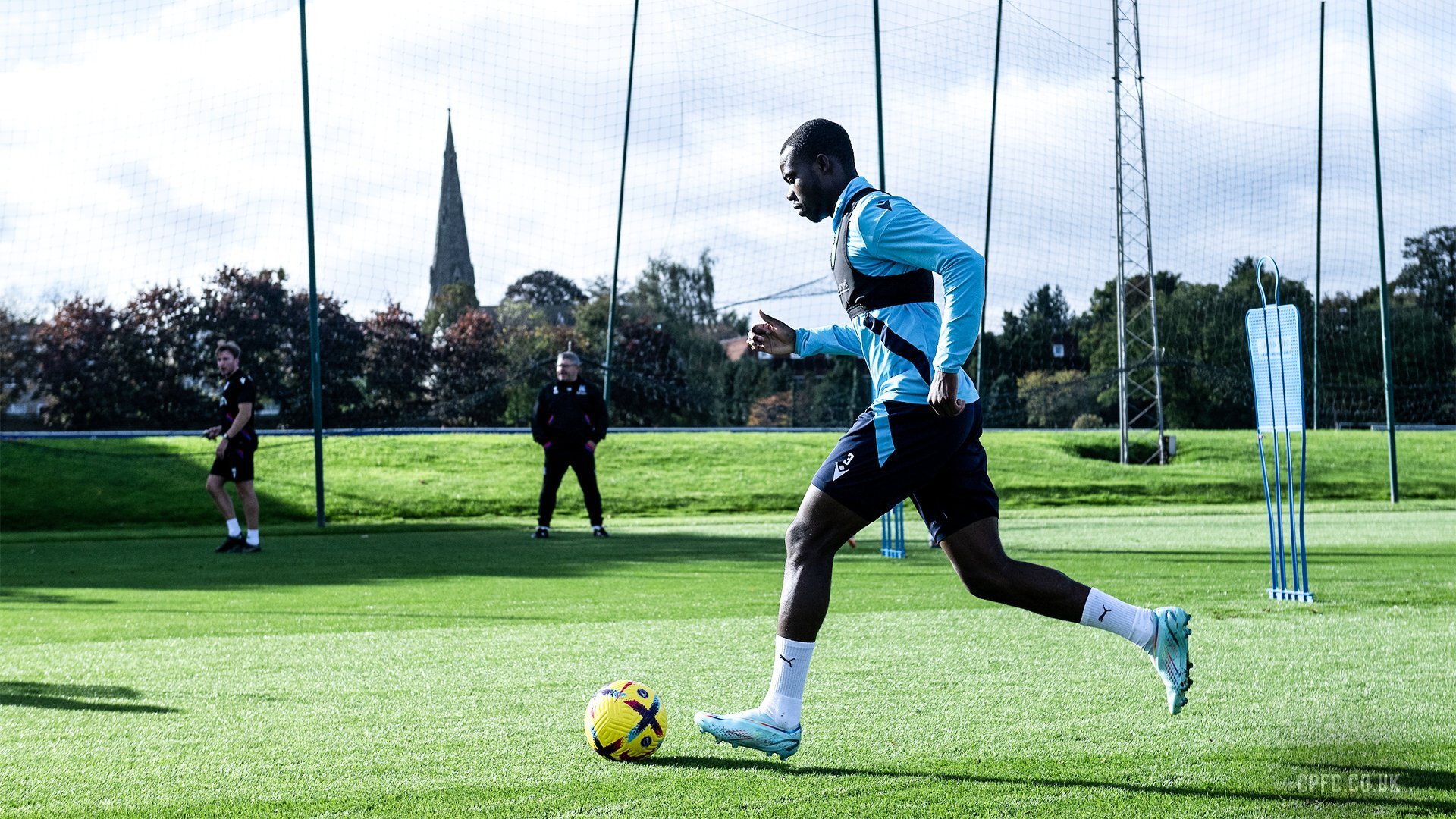
03 Nov High Intensity Bursts – Assisting In Drill And Recovery Design
Introduction
High Intensity Bursts (HIB) allow practioners to understand the intensive and chaotic nature of sport in greater detail. HIB are customisable time windows where multiple high intensive activities must occur to be considered as a burst or HIB.
HIB can help practioners with planning and training prescription through:
- Drill design for team sessions and individual rehab sessions.
- Understanding match day demands.
- Tailoring recovery for players, by matching exercise-to-rest ratios from game data.
High Intensity Bursts require a minimum of three high intensity activities occurring within the configured timeframe of 20 seconds (both minimum number of activities along with maximum time between activities are customisable in Sonra).
The high intensity activities and their pre-set zone values that Sonra uses to recognise a HIB are:
- Accelerations ≥ 4 m/s2 – (Default Zone 5)
- Decelerations ≥ 4 m/s2 – (Default Zone 5)
- Impacts ≥ 11G – (Default Zone 5)
- Sprints
This means that a player must complete at least 3 of the above activities separated by no more than 20 seconds each to be considered a HIB.
Monitoring High Intensity Bursts will not only aid in understanding the physical performance of an athlete but also provide insightful data to help condition athletes to the peak physical demands required by them in a game, thus improving physical game conditioning and reducing injury risk in replicating game demands.
The HIB feature has great applications within field sports with an intermittent nature which require many stops and starts for players regardless of position such as Soccer, Rugby, Hockey, Gaelic Football and Hurling.
Previous literature has stated that a player’s ability to repeat these high intensity efforts, with lower intensity periods between each effort, was an essential component to successful match play, thus increasing the importance of features such as this one in aiding in load monitoring for players [1].
Practical Applications
A study carried out in the Australian professional rugby league looked at the frequency and duration of High intensity exercise bouts (HIE bouts) and their relative timing to critical game play [2].
They found that Hit-Up forwards were involved within the most HIB out of the 3 positions examined, while also being exposed to the shortest recovery times between these HIB’s.
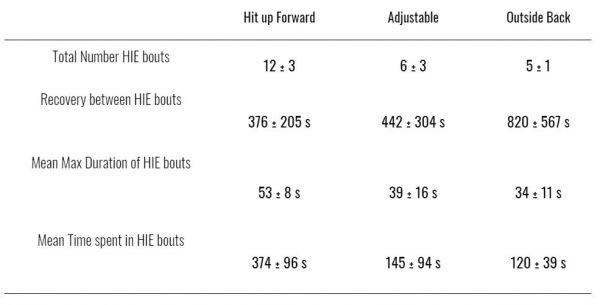
Their data supports the idea that HIB’s are influenced by position and found that HIB’s frequently occurred during critical match play; Having found that for all positional groups, 70% of repeated HIB’s were carried out within a 5-minute period prior to a try [2].
Similar statements have been made with respect to Hurling game play as it was found that’s HIB’s were carried out when the ball was in play near players which then resulted in players involvement in crucial match plays [3].
Highlighting the importance of conditioning players within trainings to complete these HIB’s.
Coaches and sports scientists are continuously searching for new ways of improving their training quality and volume for players. The common issues experienced by players are overtraining, fatigue, injury, illness and player burnout.
To combat this, we can use Sonra’s HIB feature, to gain an insight into not only the match intensity but also the recovery players experience between each bout. This makes it a lot easier for coaches to increase the specificity of drill recovery times within trainings to prepare players for match day demands.
By utilising the use of physical data through Sonra, coaches and sports scientists may also be able to differentiate between high and excessive training loads responsible for these issues [1].
Careful consideration is given in periodisation programming to maintain higher intensities in shorter periods of training, leading up to match day, however the effect of improper recovery during these sessions may impact the adaptations gained by players due to excessive loads [4].
By gathering the duration of each HIB and then dividing that by the subsequent time between the next HIB, we can generate an accurate exercise-to-rest ratio for that game or session.
To do this, practitioners use the duration of a selected HIB and then divide that by the subsequent time between it and the next HIB, generating an accurate exercise to rest ratio for the HIB within that game or session.
Incorporating Sonra’s video manager feature will allow you to view these HIB’s as they were carried out by players in a game, in order to further inform drill design.
Video integration will inform coaches of the types of bursts during game play that result in these HIB’s relative to their sport.
Within this feature, context is given to each HIB. For example, one HIB may be carried out during a recovery run while another may have occurred when a player was making a run for a pass.
Coaches are given both the physical data and video analysis footage to then recreate these HIB’s while incorporating the technical and tactical aspects of the event.
This feature will allow you to see high intensity bursts as a grouped metric, streamlining the process of high intensity load monitoring of players. Presenting you with data for each of the HIB sub metrics, at a glance, within the session desktop dashboard via Gauges, Combo Charts, Metric Table and Metric Charts.
Implementing HIB through Sonra
HIB are completely customisable to the end user’s discretion, via Settings > Drills & HIBs.
When selecting which zones want your accelerations, decelerations and Impact zones to be, you will be presented with a drop-down menu containing the zones 1-6 for you to choose from.
Users can also alter these zone values to your own preference within the Default Zone Tab in Settings.
You can also change the minimum number of high intensity activities per burst from the default of 3 by simply typing in your preferred number, similarly you can change the time between bursts from 00:00:20 to your preferred time frame by typing in the new time.
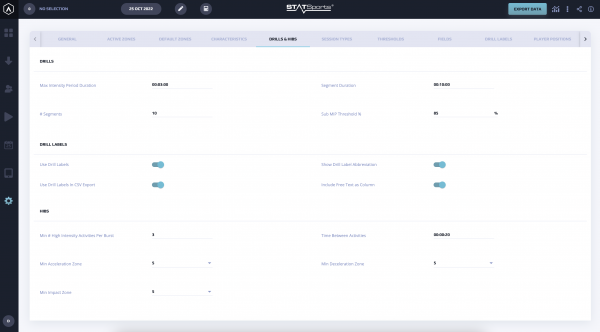
HIB burst metrics, such as HIB distance, number of HIB efforts and time between HIB can be viewed on any Sonra visualisation charts or widgets and exported via csv and API.
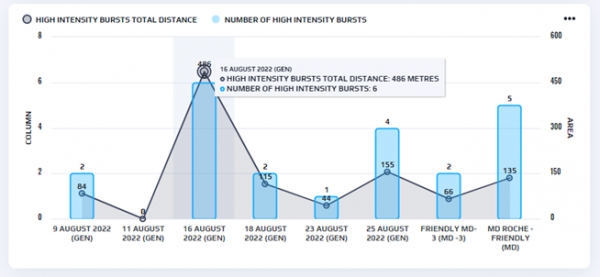
Through Sonra’s detailed metric csv export function, users can get a more extensive insight to each individual HIB. Simply navigate to the ‘Export Data’ button on the top right of the software, select the tab labelled ‘Metrics’, then scroll down to select the desired High Intensity Burst export.
High Intensity Activities can also be exported here. HIA will be based on the custom criteria and zones set in the Drills & HIBs tab of Settings, mentioned above.
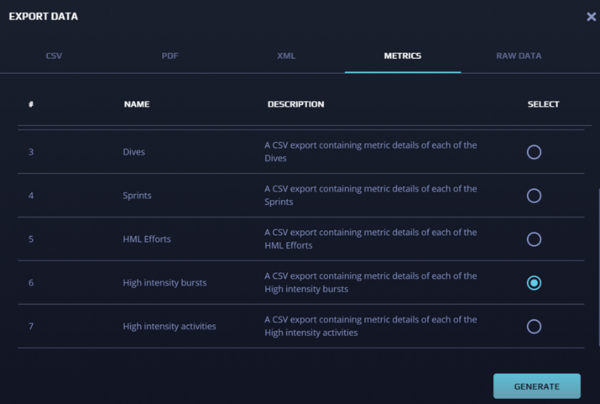

References
- Kellmann, M. (2010). Preventing overtraining in athletes in high‐intensity sports and stress/recovery monitoring. Scandinavian journal of medicine & science in sports, 20, pp.95-102.
- Austin, D. J., Gabbett, T. J., & Jenkins, D. J. (2011). Repeated high-intensity exercise in a professional rugby league. The Journal of Strength & Conditioning Research, 25(7), 1898-1904.
- Young, D., Malone, S., Beato, M., Mourot, L. A. U. R. E. N. T., & Coratella, G. (2018). Identification of Maximal Running Intensities During Elite Hurling Match-Play. The Journal of Strength & Conditioning Research.
- Owen AL, Djaoui L, Newton M, Malone S, Mendes B. A contemporary multi-modal mechanical approach to training monitoring in elite professional soccer. Sci Med Footb. 2017;1(3):216–21.
Author Details
Claire Dunne,
Account Management,
Account Manager,